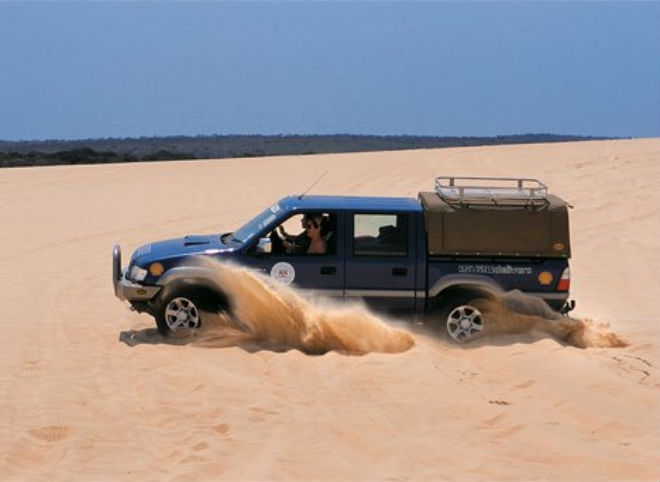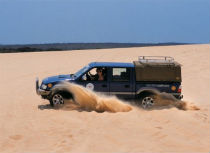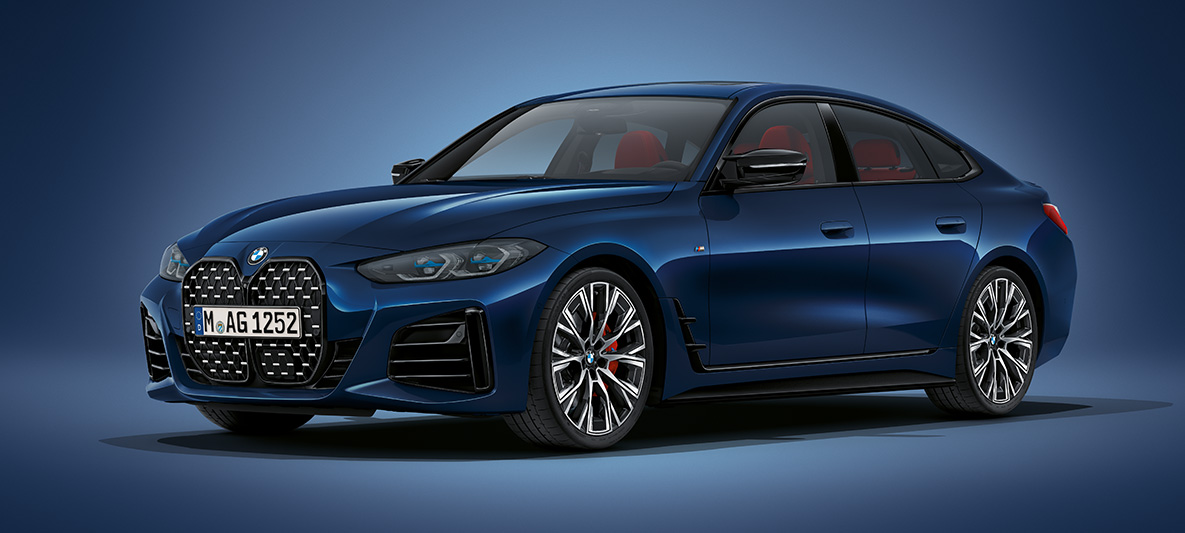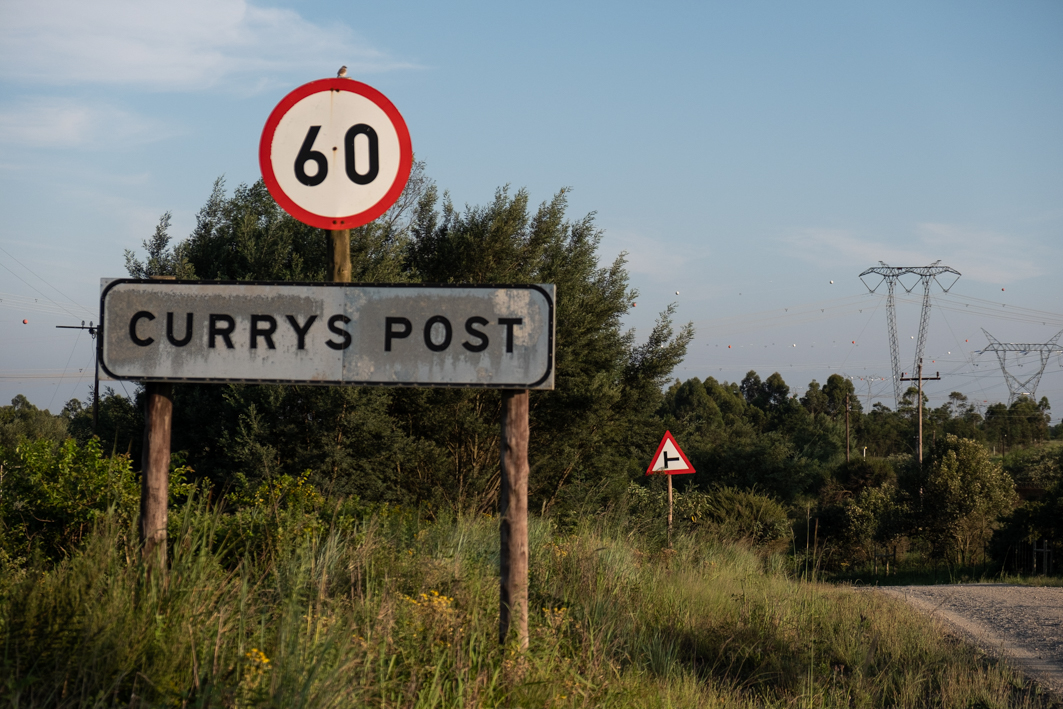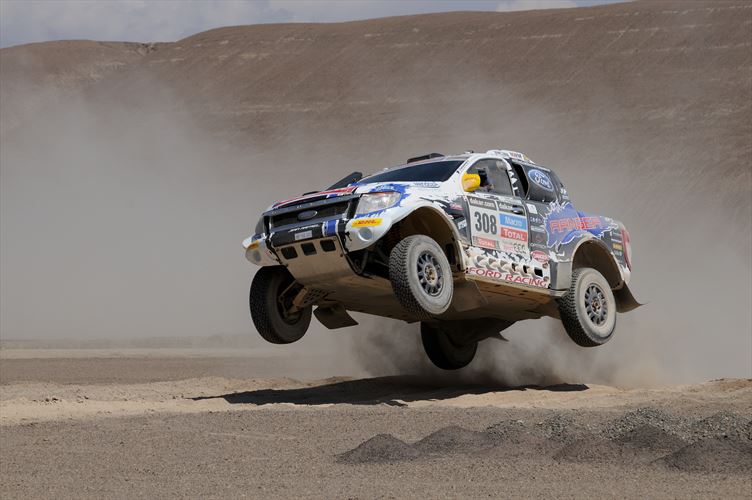DRIVING IN SAND AND DUNES
Here the first step is to deflate your vehicle’s tyres (45% of normal tyre pressure is about the limit), especially if your 4×4 is not equipped with wide tyres, specifically designed for sandy conditions.
Make sure to engage four-wheel drive before you enter the sandy area. If your vehicle is equipped with free-wheel hubs, ensure that these are locked.
Firstly, try to tackle the sand in high-range, first gear. If the sand looks particularly treacherous, third-gear low range is another option.
What you should avoid, as far as possible, is to change gear while you are negotiating the sand. This momentary loss of drive may be all that is needed to bog down. Momentum is key.
And remember, the higher the gear, the greater the chances are that you may have to gear down. On the other hand, the lower the gear, the greater the chance is for wheel spin to occur – which can also bog the vehicle down.
Where possible, try to stick to the tracks of other vehicles. When you need to stop, don’t apply the brakes. This may sound illogical, but the sand will do all the stopping you need. Look for an area that looks firm and the most solid, and simply let the vehicle grind to a halt under its own momentum. This way the track you leave remains as shallow and firm as possible, which is a great thing when you want to get going again.
When you want to pull-off again, and the vehicle struggles to get off the line, simply reverse a metre or four (depending on conditions) in the existing tracks, before moving forward again.
When you start off, don’t do it with your right foot pinned against the floor carpet. Try to pull off as smoothly as possible, without wheelspin, and smoothly build up the required momentum.
BEACH DRIVING
Although beach driving is banned in South Africa (and some other countries too), you may one day end up in a tight spot where you have to negotiate a stretch of beach, such as the infamous Acre of Death stretch in Angola.
Many of the tips relating to sand driving also apply to beach driving. If you know you are going to have to negotiate a stretch of beach, always make sure you carry a silicone water repellent, a tyre pressure gauge and a pump (hand or electrically operated).
Common sense is an important ingredient. Logic dictates that the best time to drive on the beach is when the tide is receding. This should give you enough time to dig your vehicle out if you get bogged down, before the tide turns. If you get caught out by the incoming tide, and the sea takes over…well.
